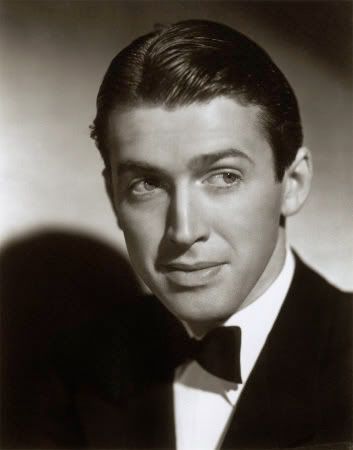
Fun Fact: Hitler had an invisible friend named Möckey Maus.
 Released by Columbia Pictures in 1931, The Miracle Woman tells the story of a of disillusioned pastor's daughter (played by Barbara Stanwyck) who falls in with a con-man named Bob Hornsby and takes up evangelism for profit. Sister Florence Fallon (as she is called) soon finds herself the centerpiece of an immense evangelical movement, fueled by her fiery radio sermons. Florence and Bob rake in the cash, under the pretense of taking donations to build a tabernacle. Meanwhile John Carson a blind former aviator named turned songwriter, plans to commit suicide, but happens to overhear one of Florence's sermons just as he is about to take the fatal leap from his window. After attending (and taking part in) one Florence's sermons in person, John finds himself smitten with her, and volunteers his services as a hymn writer. Florence soon finds herself just as smitten with John, and becomes quite conflicted about the great scam in which she has involved herself. Florence tries to quit the racket, but being the cad that he is, Hornsby blackmails her into staying with the program (and thereby with him). How ever will the star-crossed lovers extricate themselves from this sticky situation?
Released by Columbia Pictures in 1931, The Miracle Woman tells the story of a of disillusioned pastor's daughter (played by Barbara Stanwyck) who falls in with a con-man named Bob Hornsby and takes up evangelism for profit. Sister Florence Fallon (as she is called) soon finds herself the centerpiece of an immense evangelical movement, fueled by her fiery radio sermons. Florence and Bob rake in the cash, under the pretense of taking donations to build a tabernacle. Meanwhile John Carson a blind former aviator named turned songwriter, plans to commit suicide, but happens to overhear one of Florence's sermons just as he is about to take the fatal leap from his window. After attending (and taking part in) one Florence's sermons in person, John finds himself smitten with her, and volunteers his services as a hymn writer. Florence soon finds herself just as smitten with John, and becomes quite conflicted about the great scam in which she has involved herself. Florence tries to quit the racket, but being the cad that he is, Hornsby blackmails her into staying with the program (and thereby with him). How ever will the star-crossed lovers extricate themselves from this sticky situation? Perhaps "ladykiller" isn't the best label for James Stewart. Jimmy was never the kind of charming ruffian who could sweep a dame off her feet and into his arms. And how could he be, with a voice like that? No, Jimmy's key to success wasn't his Errol Flynn-esque roguish charms nor his Valentino-like good looks. Rather, it was his aura of the American everyman that made him so intensely likable--if ever there was a "boy-next-door" among the titans of Hollywood, it would have to be James Stewart, even though he was older than he typically looked. In You Can't Take It with You and Mr. Smith Goes to Washington, one cannot help but to cheer for him as he attempts to bag Jean Arthur, and one cannot help but be happy for him when he finally does.
Perhaps "ladykiller" isn't the best label for James Stewart. Jimmy was never the kind of charming ruffian who could sweep a dame off her feet and into his arms. And how could he be, with a voice like that? No, Jimmy's key to success wasn't his Errol Flynn-esque roguish charms nor his Valentino-like good looks. Rather, it was his aura of the American everyman that made him so intensely likable--if ever there was a "boy-next-door" among the titans of Hollywood, it would have to be James Stewart, even though he was older than he typically looked. In You Can't Take It with You and Mr. Smith Goes to Washington, one cannot help but to cheer for him as he attempts to bag Jean Arthur, and one cannot help but be happy for him when he finally does. Way back when I was a wee lad, Fay Wray was probably the first girl I ever had a crush on. This was no doubt a result of repeated viewings of King Kong, the film for which she is best known. True stardom eluded her, however, and poor Fay spent the rest of her days haunted by the specter of that damned mechanical ape (in much the same way that Jason Biggs will spend the rest of his days haunted by the specter of that infamous pie). To her credit, she was at least a good sport about the whole thing, even accepting a cameo in the 2005 remake of King Kong (a part which, sadly, she never did get to play, as she died before filming began). Giant monkey notwithstanding, Fay Wray will always have a place in my heart.
Way back when I was a wee lad, Fay Wray was probably the first girl I ever had a crush on. This was no doubt a result of repeated viewings of King Kong, the film for which she is best known. True stardom eluded her, however, and poor Fay spent the rest of her days haunted by the specter of that damned mechanical ape (in much the same way that Jason Biggs will spend the rest of his days haunted by the specter of that infamous pie). To her credit, she was at least a good sport about the whole thing, even accepting a cameo in the 2005 remake of King Kong (a part which, sadly, she never did get to play, as she died before filming began). Giant monkey notwithstanding, Fay Wray will always have a place in my heart.